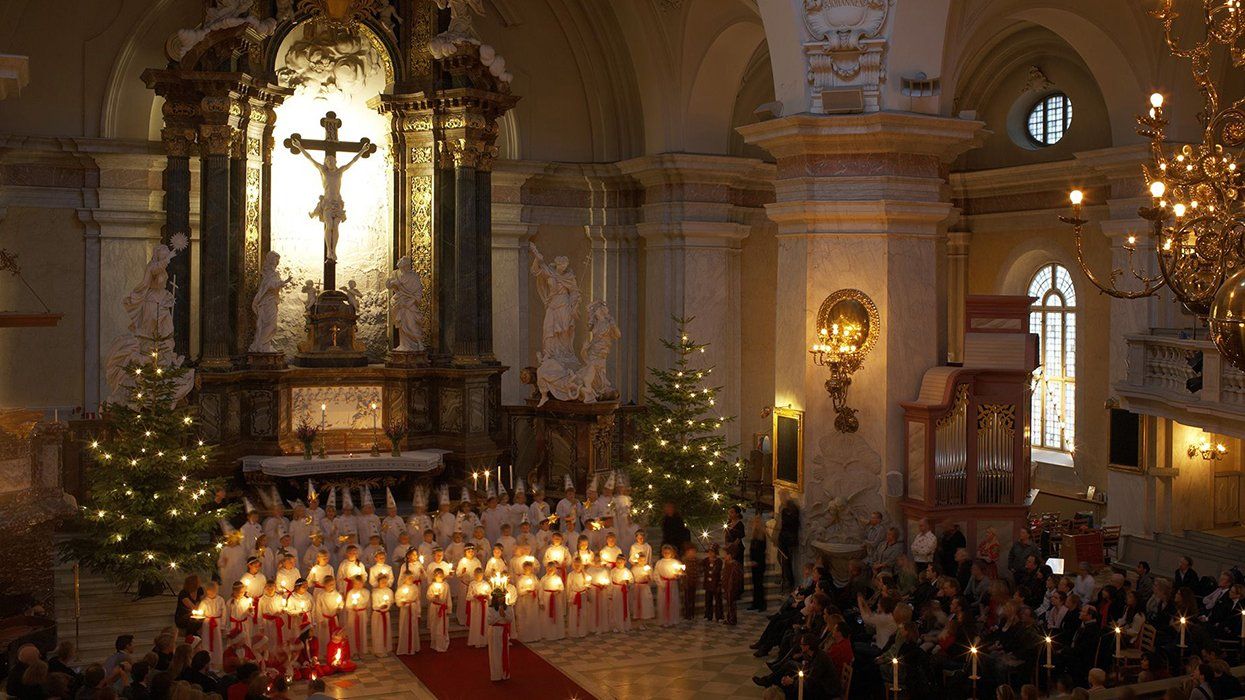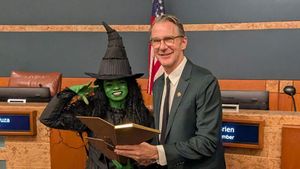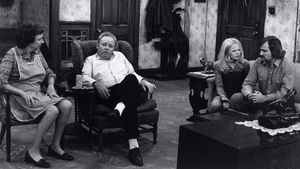All Rights reserved
By continuing to use our site, you agree to our Privacy Policy and Terms of Use.
By Nicole Mowbray, CNN
(CNN) – Swedes know a thing or two about living with light, or, right about now, living with a lack of it.
In December, the country’s capital Stockholm experiences around six hours of daylight a day, but in some northernmost parts of the country that are within the Arctic Circle, the sun barely rises over the horizon for several weeks of the winter.
This gloomy reality resulted in an ancient Swedish cultural tradition that’s growing in popularity every winter — and spreading around the world wherever Swedish communities exist.
December 13 is Luciadagen or “Lucia Day,” on which Swedes celebrate the coming of light in the darkness. The day was originally timed to the Julian calendar which marked midwinter — the winter solstice — slightly earlier than we do today (December 21 or 22).
Festivities begin in the morning when one chosen young person leads a procession of young boys and girls clad in white full-length gowns with red ribbon sashes as they sing traditional songs. (Traditionally, “Lucia” has been a girl, but it’s increasingly common for anyone to play the role — indeed superstar Swedish footballer Zlatan Ibrahimovic once posed as Lucia.) Processions happen anywhere — in schools, churches, workplaces, community centers.
Lucia wears a crown of light in her hair, either real — or now equally commonly, electric — candles in a wreath atop her head as she leads the procession. She is attended by another group of wreath-wearers also carrying a candle, and a group of “star boys” carrying stars on sticks and wearing paper hats. Christmas “elves” carrying lanterns are also often part of the spectacle.
Songs play a key part in the festivities. While there are many traditional Santa Lucia songs, the most commonly sung is translated as: “The night treads heavily/ around yards and dwellings/ In places unreached by sun/ the shadows brood/ Into our dark house she comes/ bearing lighted candles/ Saint Lucia, Saint Lucia.”
The legend behind the festivities
While this may all sound a bit out there, the spreading of light and joy in this way is a tradition that harks back hundreds of years “in clear reference to life in the peasant communities of old: darkness and light, cold and warmth,” say the folks at Visit Sweden, who point out the tradition is the winter equivalent of June’s fabled midsummer festivals.
Indeed, the namesake of the festivities can be traced back to the 4th century when legend has it the martyr Lucia of Syracuse brought food to Christians hiding in Roman catacombs, lighting her way with a candlelit wreath on her head.
The festival in its more modern form was first recorded in a home in Sweden in 1764, but the custom really established itself in the 1900s. According to Swedish folklore, the long night of December 13 was dangerous, with dark spirits out in force. Staying awake was important.
Eating helped that, which is just one reason why feasting remains an intrinsic part of Lucia celebrations. After the songs and procession, people gather for gingerbread biscuits and sweet, saffron-flavored buns (lussekatter) shaped like curled-up cats and with raisin eyes, accompanied by hot chocolate, coffee or “glögg”: Swedish mulled wine.
The celebrations (which usually last around 30 minutes) take part across Sweden, but in Stockholm the most fabled places to witness the spectacle is either in the city’s historic cathedral Storkyrkan or at the nearly 300-year-old wooden Seglora Kyrkan (Seglora church) in the open-air Skansen museum, where it’s been celebrated since 1893. This year marks the venue’s 130th anniversary of hosting the festivities.
But Lucia is being increasingly celebrated by the Swedish diaspora outside of Sweden too, with services run by the Svenska Kyrkan in London and Brighton in the UK, at the Gloria Dei Old Swedes’ Episcopal Church in Philadelphia, at Svenska Kyrkan in New York, at the American Swedish Institute in Minneapolis and at the Swedish American Museum in Chicago.
Celebrating light in the dark days… Lucia feels like the celebration we all need right now.
The-CNN-Wire
™ & © 2023 Cable News Network, Inc., a Warner Bros. Discovery Company. All rights reserved.












































































